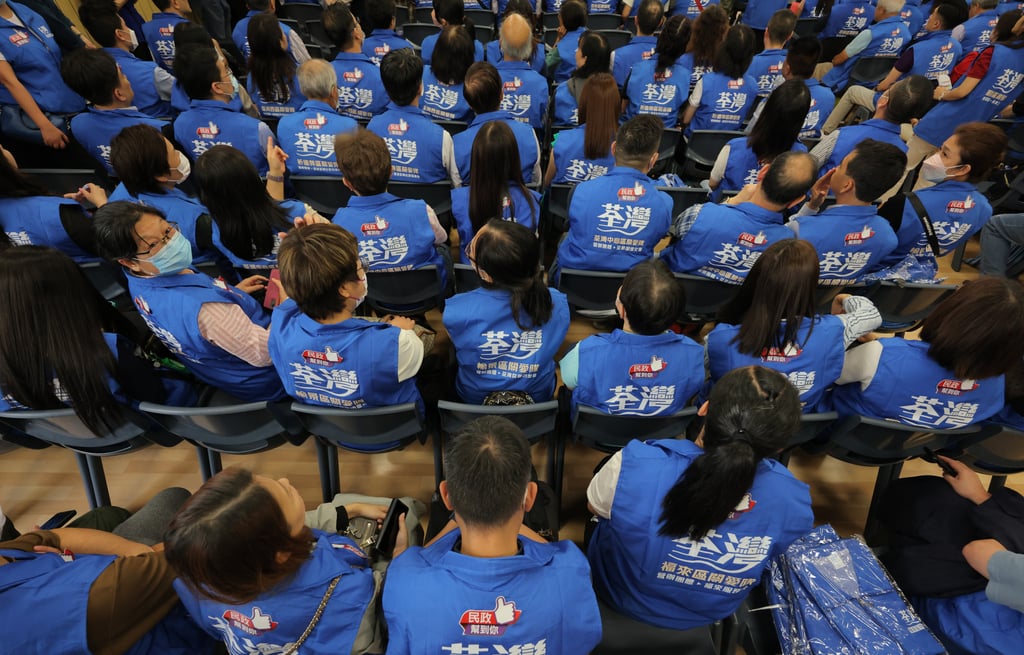Community care teams tasked by the Hong Kong government with helping needy households have exceeded their targets of family visits, the home affairs chief has said, as authorities revealed that volunteers had reached out to over 3,600 elderly residents and carers since March.
But a concern group and a lawmaker called for more professional training for volunteers, citing how some team members did not even enter flats during home visits.
Secretary for Home and Youth Affairs Alice Mak Mei-kuen acknowledged the teams’ performance on Saturday following a report that the bodies of a bedridden 82-year-old woman and her 60-year-old son were found in their flat in Kwun Tong on Wednesday.
A source earlier told the Post the man’s death was likely to be accidental, while the mother who suffered from illnesses died later after she was left uncared for.
Mak said community teams were tasked with creating a caring and inclusive culture, which included checking in with residents in need.
“Each community team has a target to meet. They have to visit and serve families, residents, and the people in need in the district,” she told the press after an event.
“Our community team members have achieved the target and some have even exceeded it.”
Mak stressed that collaboration between different parties in society was required to create a “care network” that identifies families who are in need.
The Ombudsman on Friday issued a response to the Kwun Tong incident, saying there had been tragedies in recent years where carers succumbed to unbearable pressure.
Similar incidents had also occurred in cases where an elderly person was caring for another senior resident or disabled relative, or vice versa, he said.
The government launched the 12-month Pilot Scheme on Supporting Elderly and Carers in March, where community care teams help identify elderly and disabled people in need in the Tsuen Wan and Southern districts.
In a reply to the Post, the Social Welfare Department said it had visited more than 3,600 elderly people who lived alone or with their spouses, and carers for elderly or disabled people so far.
“They have provided care and support follow-up services through visits, phone calls, meetings and activities, offering continuous care … and introducing information on community services,” its spokesman said.
Under the scheme, the teams had also helped 101 elderly and disabled persons to receive subsidies for installing an emergency alarm system as of the end of July.

Crystal Yuen Shuk-yan, of the Society for Community Organisation, said the pilot scheme should be expanded as soon as possible and cover all 18 districts in the city.
She also said that the help rendered by community teams was limited because they comprised volunteers and suggested providing more training to its members or recruiting other professionals’ help.
“Some elderly residents told us that the visits made by the community teams are quite simple, and do not necessarily provide actual help,” she said.
“They said the teams simply distributed gifts and greeted them. Some of them did not even enter their flats,” she added, referring to teams outside the trial scheme.
Yuen said even if the community teams had reached their targets, it did not mean that they were able to identify and reach out to all who were in need.
“The government should think about how they can distribute their resources to create a tighter network so that more elderly can get help,” she added.
Lawmaker Bill Tang Ka-piu, a member of the Legislative Council’s welfare services panel, said the community care team manpower was limited because they were mostly retirees with spare time.

He urged the government to formulate a list of elderly residents at high risk and actively reach out to them.
Tang said he believed the Social Welfare Department was able to create such a list as they had information about elderly residents receiving social security benefits.
“We should first find out the number of elderly in this community and assess whether they are of high risk,” he said.
“How should we assess the risk? We suggest that their flats must be equipped with a certain amount of gerontechnology such as a waterproof emergency alarm system.”
He also suggested installing alarm systems in flats to alert security guards if a tenant had not opened the door for 24 hours.
Hong Kong currently has 452 care teams providing help for the vulnerable.


